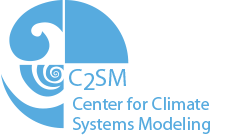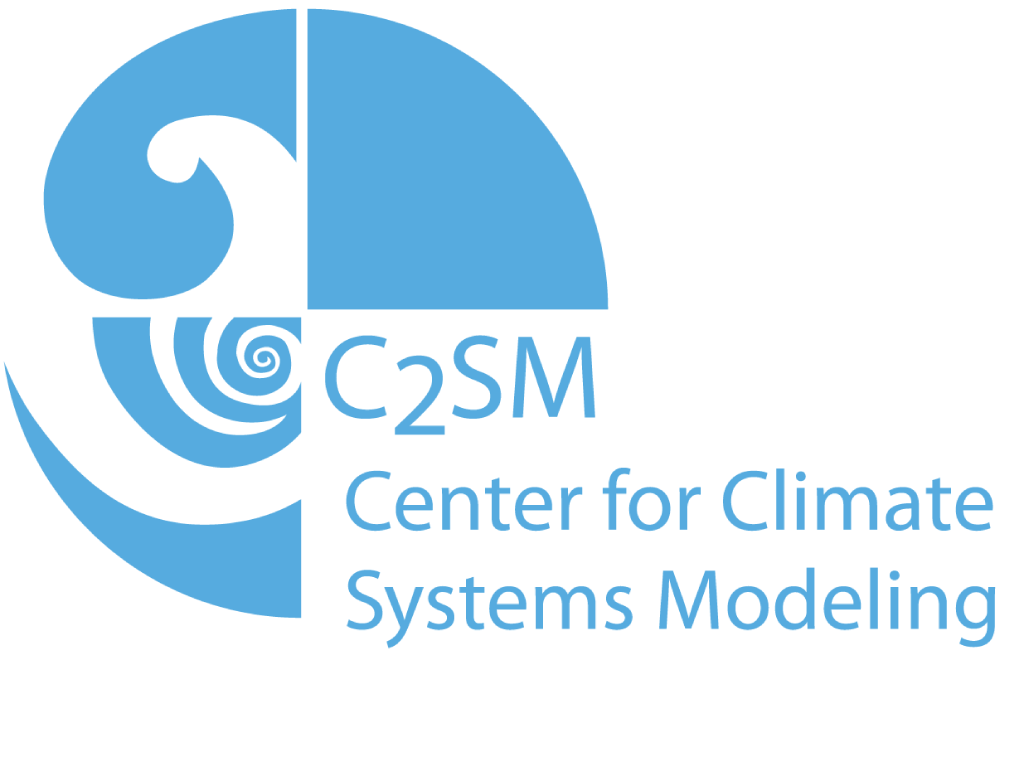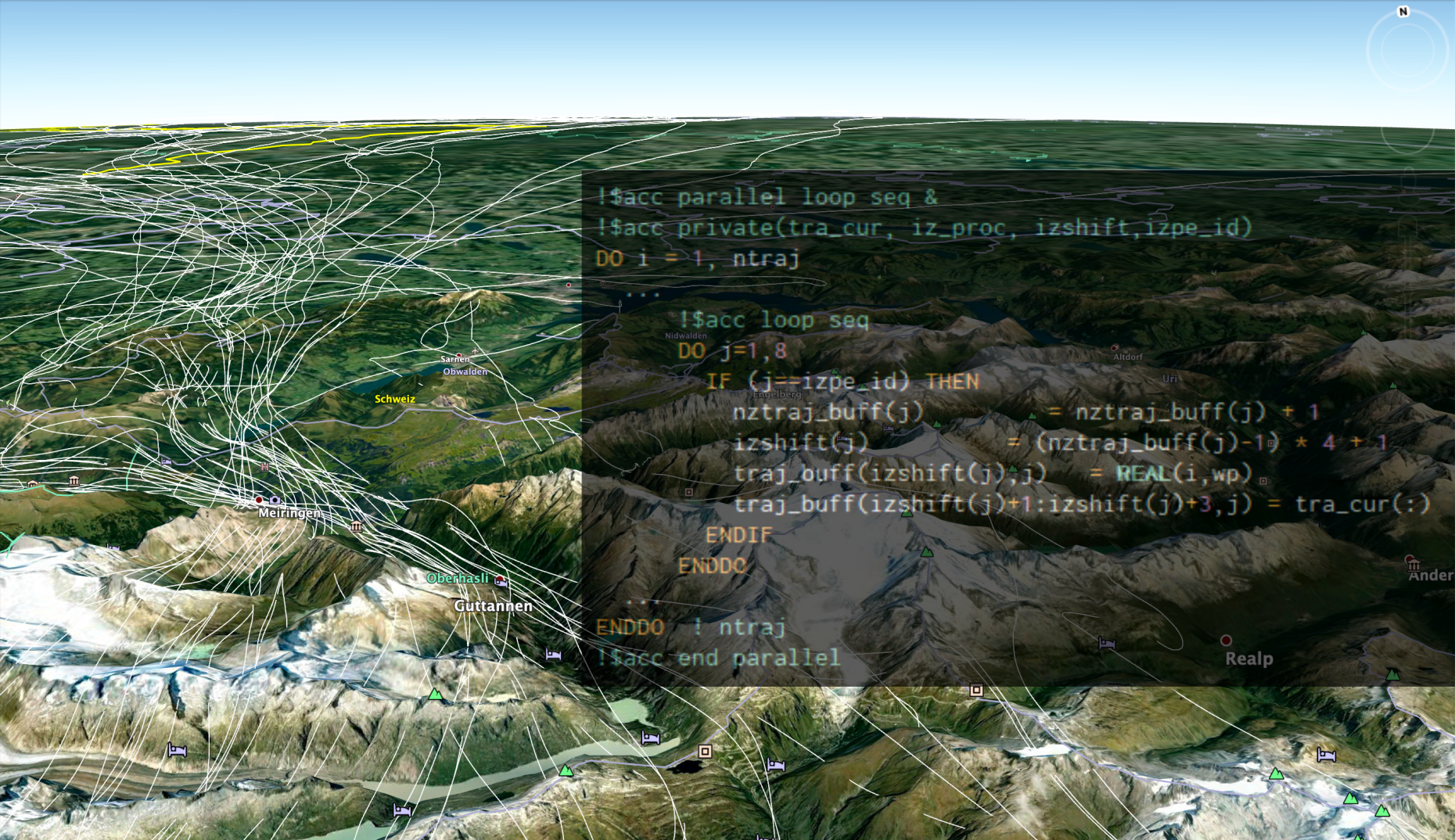C2SM Newsletter vol. 31

Topics in this Newsletter - February 2021
- News from the Steering Committee
- Modelling activities and Services
- News from C2SM Community
- Selected press articles
- PhD defenses in the C2SM community
- Upcoming events of interest
- Paper: A new set of hourly downscaled climate change scenarios over Switzerland
- Paper: Attribution of precipitation to cyclones and fronts in a kilometer-scale regional climate simulation
- Paper: Genomic vulnerability to rapid climate warming in a tree species with a long generation time
- Paper: Influence of internal climate variability on future snow trends in the Swiss Alps
- Paper: Constraining Atmospheric Selenium Emissions Using Observations, Global Modeling, and Bayesian Inference
- Paper: Physiological response of Swiss ecosystems to 2018 drought across plant types and elevation
After several years of preparations, we are delighted to announce C2SM’s start as an extra-departmental science center of ETH effective January 2021. C2SM is now assigned to the domain of ETH’s Vice President for Research, and as such we will directly report to him.
C2SM transitions into this new organisational form together with renewed commitments from its long-term partners, i.e., the Swiss Federal Office for Meteorology and Climatology (MeteoSwiss), the Swiss Federal Laboratories for Materials Science and Technology (Empa), the Swiss Federal Research Institute for Forest, Snow and Landscape Research (WSL), and the Swiss Centre of Excellence for Agricultural Research (Agroscope) as a junior partner. With the transition, C2SM is ensured a long-term perspective allowing our vision to solve tomorrow’s challenges in the analysis and modelling of weather and climate to come true. Please read more details in the news article on the transition.
The transition and the associated expansion of strategic foci and tasks requires a stronger workforce. We were successful in making the case for two new positions in the areas of HPC and climate scenarios/impact modelling. In addition, one position became open after the departure of Colombe Siegenthaler. The hiring is completed. We welcome Jonas Jucker, who started his position in January 2021, as a regular member of the core team. In addition, we welcome Michael Jähn, currently at Empa, to C2SM in March, as well as Jan Rajczak, currently at MeteoSwiss, in April this year.
Modelling Activities and Services
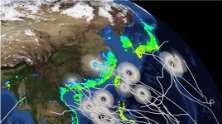
Recent activities concerning the ICON model included the organisation of two ICON-Meetings, an opportunity for all ICON users to exchange and share experiences with each other. Furthermore, with respect to the increasing importance of ICON, its testing capability with the Jenkins Continuous Integration Framework has been extended. For example, it is now also possible to run Jenkins on the Euler-Cluster at ETHZ. To test the correctness of climate-model results of ECHAM-HAMMOZ and ICON simulations, we implemented a sanity-checker that statistically compares results from a 10-year simulation in question against respective data of a reference pool. This tool is based on the work of David Neubauer from the group of C2SM member Ulrike Lohmann. In order to enable accurate radiation forecasts in mountainous areas with the ICON model, the implementation of the so-called 'Topographic Radiation Correction Parameters" has been extended for the unstructured ICON grid in the COSMO and ICON software Extpar.
Recent activities around the COSMO model included the successful porting of the online trajectory module of COSMO to GPU during the CSCS GPU Hackathon in September 2020. More information about this activity can be found in the article below "Following the air on GPUs".
Additionally, we implemented daily testing of the latest version of the GPU-enabled COSMO model on Piz Daint using the Jenkins tool. To make our support for the software related to our supported models more efficient, we also continued our efforts to clarify and document C2SM maintenance needs by drafting a maintenance document and organizing a meeting of the C2SM maintenance taskforce late in 2020.
Following the air on GPUs
A team of researchers led by Katherine Osterried (C2SM) and Stefan Rüdisühli (C2SM / Atmospheric Circulation Group led by Sebastian Schemm) participated in the CSCS GPU Hackathon with the COSMO online parcel trajectory module. They succesfully migrated the code to GPUs and thereby reduced the computation time on PizDaint by a factor of 30. This speed-up is an important prerequisite to enable high-resolution Lagrangian studies of, for example, cloud-circulation interactions or Alpine valley flows, on climatological time scales. This year, the CSCS GPU Hackathon was carried out completely online for the first time. It featured daily progress reports in Zoom community presentations, as well as live Q&A sessions with experts on NVIDIA debuggers and profilers and even recreational Tai chi breaks. Programming work was carried out in small breakout teams live via Zoom with screen-shared terminals, code was exchanged via Github and Slack was used for all written communication, including with the mentors, the CSCS cluster support, and PGI experts.
More details: https://c2sm.ethz.ch/news/archive/2020/11/following-the-air-on-gpus.html
Open ETH project EXCLAIM funded: Start in spring 2021
The newly funded open ETH project EXCLAIM aims at developing an exascale computing and data platform for weather and climate modelling that is capable of simulating the regional to global ocean-sea-ice-atmosphere-land system at much higher resolution than hitherto possible. Such a step change in resolution will permit the explicit modelling of many critical processes of weather and climate, in particular clouds and convection, thus reducing uncertainties in weather prediction and climate projections.
EXCLAIM will be run under the umbrella of ETH’s Center of Climate Systems Modeling (C2SM) and will centrally contribute to the implementation of C2SM’s first two research themes, High-Performance Computing and Earth System Modelling. Over the next six years, a team of about 10 software engineers and postdocs, guided by to be appointed directors of science and of software will develop this platform in collaboration with CSCS, the Swiss Data Science Center (SDSC), MeteoSwiss, and Empa.
More details: https://c2sm.ethz.ch/research/exclaim.html
POLE
The project POLE (Past and Future of the Ozone layer Evolution) is supported by Swiss NSF for four years and carried out by scientists of PMOD/WRC. The overall objective of POLE is to understand the past behaviour and assess the future ozone layer evolution. The widely expected future ozone recovery and the efficiency of the Montreal Protocol is now being questioned due to disagreement between models and observations. After two years of the POLE project a new atmosphere-ocean-aerosol-chemistry-climate model SOCOLv4.0 has been developed and validated against available observations and other models using comprehensive statistical tools (Suhkodolov et al., 2021, in preparation; Doyennel-Karagodin et al., 2021, in preparation). The POLE project is now in its third year and the main focus of the research will be on assessing the role of the Montreal Protocol in sustaining recovery of the ozone layer and protecting climate, and projections of future behaviour of the ozone layer considering very-short lived species, newly discovered ozone-depleting substances. Two simulations with SOCOLv4.0 have been carried out within the project POLE: a hindcast run from 1960-2018 and future one from now to 2100. The experiments have been successfully completed using CSCS and Euler facilities. The hindcast simulation will be used in the WMO 2022 report. Many output fields characterizing atmospheric dynamics and chemistry have been stored at CSCS and are available for the analysis for all interested groups.

ICOS
external pageICOS Switzerlandcall_made, the Swiss contribution to external pageICOS RIcall_made, has received funding from the SNF for the next four years (ICOS-CH Phase 3, 2021-2025). This will ensure the continuation of the ICOS measurements at the two ICOS Class 1 stations external pageJungfraujochcall_made and external pageDavoscall_made! With these two unique measurement stations and their exceptional geographical location in the central part of the Alps, ICOS-CH is an outstanding node within the ICOS RI network.
Selected press articles
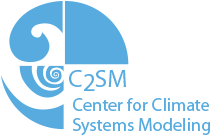
- swissinfo.ch: external pageDer schnellste und günstigste Weg zum klimaneutralen Flugverkehrcall_made, Prof. Marco Mazzotti, 04.02.2021
- TV Südostschweiz: external pageDer Klimawandel ist schneller als die Arvecall_made, Dr. Felix Gugerli Künzle, 28.01.2021
- SRF 1, Nano: external pageDie Klimaerwärmung lässt immer mehr Gletscherseen entstehencall_made, Prof. Daniel Farinotti, 21.01.2021
- Neue Zürcher Zeitung: external pageEuropa droht lang anhaltende Kältecall_made, Prof. Daniela Domeisen, 31.12.2020
- SRF 1, Tagesschau Hauptausgabe: external pageBilanz nach fünf Jahren Pariser Klimaabkommencall_made, Prof. Reto Knutti, Prof. Anthony Patt, Prof. Sonia Seneviratne, 12.12.2020
- SRF 1, Tagesschau: external pageHeute hat die UNO ihren neusten Klimabericht veröffentlichtcall_made, Prof. Nicolas Gruber, 02.12.2020
- SonntagsZeitung: external pageDer Klimawandel macht den Waldbesitzern zu schaffencall_made, Prof. Harald Bugmann, 22.11.2020
PhD Defenses in the C2SM community

We congratulate our community members for their successfully completed PhDs!
- Aryeh Feinberg: The atmospheric sulfur and selenium cycles: a global model of transport and deposition. ETH Zurich, 13 May 2020.
- Raphael Portmann: The life cycle of potential vorticity cutoffs: climatology, predictability, and high impact weather. ETH Zürich, 09 Sep 2020.
- Stefanie Westerhuis: Improving forecasts of fog and low stratus in a high-resolution numerical weather prediction model. ETH Zürich, 20 Nov 2020.
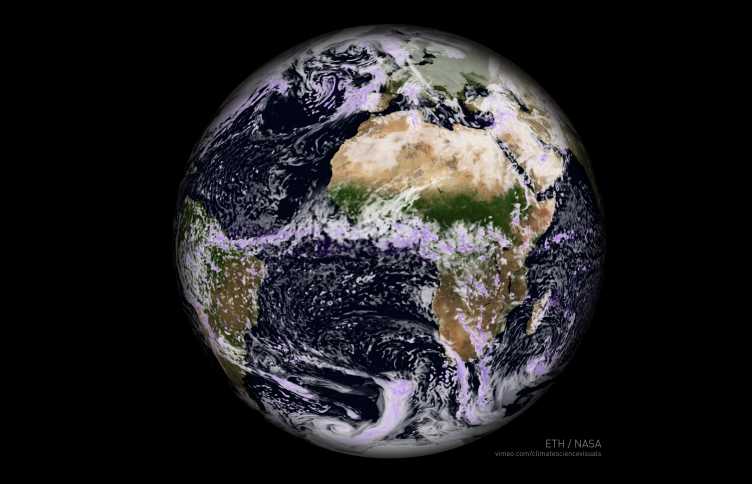
ETH-Klimarunde
Tuesday, October, 26, 2021
Save the date!
Highlighted Papers from the C2SM Community
Paper: A new set of hourly downscaled climate change scenarios over Switzerland
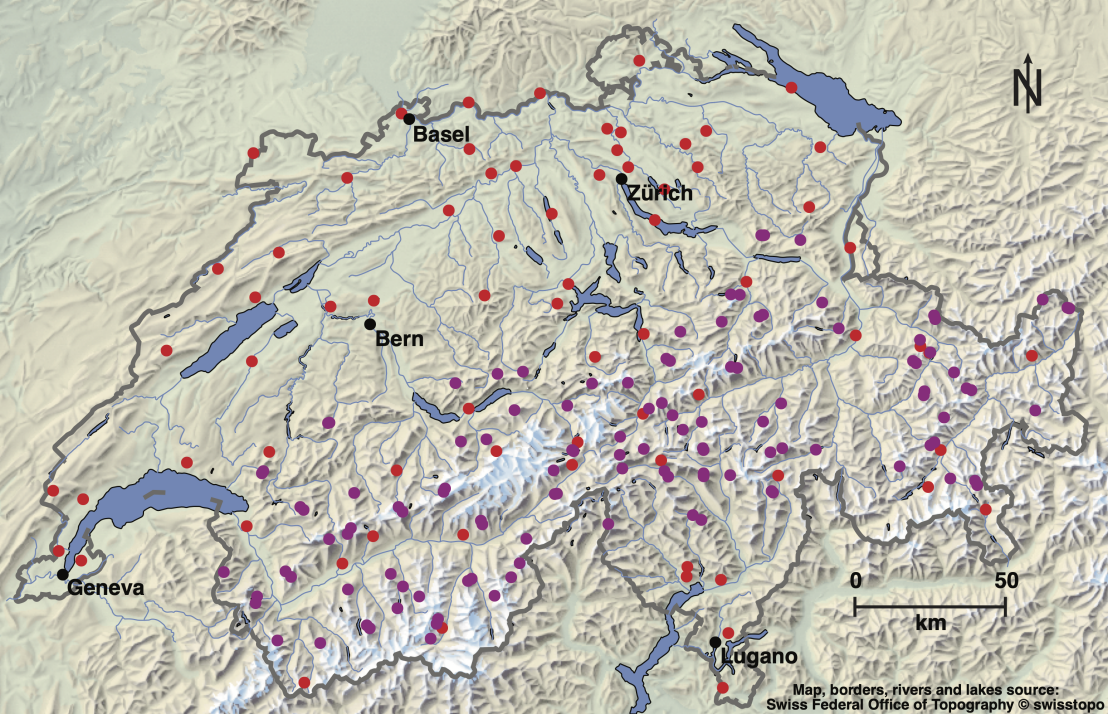
In fall 2019, a new set of climate change scenarios has been released for Switzerland, the CH2018 dataset. The data are provided at daily resolution. We produced from the CH2018 dataset a new set of climate change scenarios temporally downscaled at hourly resolution. In addition, we extended this dataset integrating the meteorological stations from the IMIS network, an alpine network of automatic stations operated by the SLF. The stations where climate change scenarios are available at hourly resolution are shown in Figure 1.
The extension to the IMIS network is obtained using a Quantile Mapping approach in order to perform a spatial transfer of the CH2018 scenarios from the location of the MeteoSwiss stations to the location of the IMIS stations. The temporal downscaling is performed using an enhanced Delta-Change approach. A careful reading of the paper accompanying the dataset is necessary to understand the limitations and scope of application of this new dataset.
Michel, A., Sharma, V., Lehning, M., and Huwald, H. (2021). Climate change scenarios at hourly time-step over Switzerland from an enhanced temporal downscaling approach, International Journal of Climatology, 2021,external pagedoi:10.1002/joc.7032call_made
Michel, A., Sharma, V., Lehning, M., and Huwald, H. (2021). Dataset for: Climate change scenarios at hourly time-step over Switzerland from an enhanced temporal downscaling approach, external pagehttps://www.envidat.ch/dataset/climate-change-scenarios-at-hourly-resolutioncall_made, doi:10.16904/envidat.201
Paper: Attribution of precipitation to cyclones and fronts in a kilometer-scale regional climate simulation
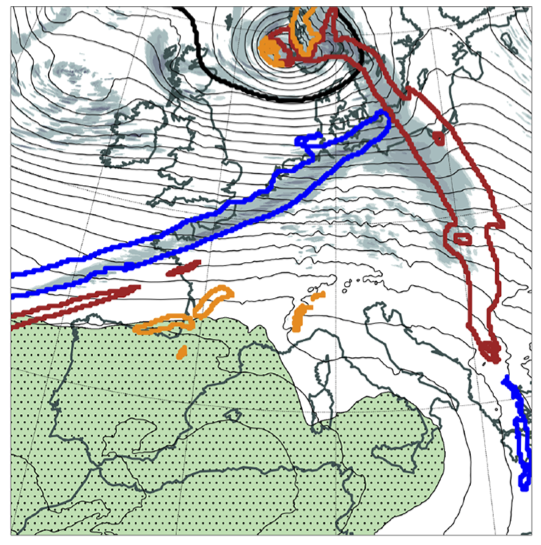
What percentage of precipitation is related to cold fronts, warm fronts, the cyclone center, or to convection in high-pressure systems? This study addresses this long-standing meteorological question based on a kilometre-scale climate simulation with explicit deep convection and a sophisticated identification and tracking algorithm for cyclones and fronts. Cyclones and fronts are identified as two-dimensional features and tracked over time based on feature overlap and size. This dataset then serves to define seven mutually exclusive precipitation components: cyclonic (near cyclone center), cold-frontal, warm-frontal, collocated (e.g., occlusion area), far-frontal, high-pressure (e.g., summer convection), and residual. The climatological analysis for a 9-year period shows substantial regional and seasonal differences. For instance, considering heavy precipitation events reveals that high-pressure precipitation dominates in summer over the continent, whereas cyclones contribute substantially, especially in the Mediterranean in fall through spring and in northern Europe in summer.
Rüdisühli, S., Sprenger, M., Leutwyler, D., Schär, C., and Wernli, H. (2020). Attribution of precipitation to cyclones and fronts over Europe in a kilometer-scale regional climate simulation. Weather Clim. Dynam., 1, 675–699. doi: external page10.5194/wcd-1-675-2020call_made
Paper: Genomic vulnerability to rapid climate warming in a tree species with a long generation time
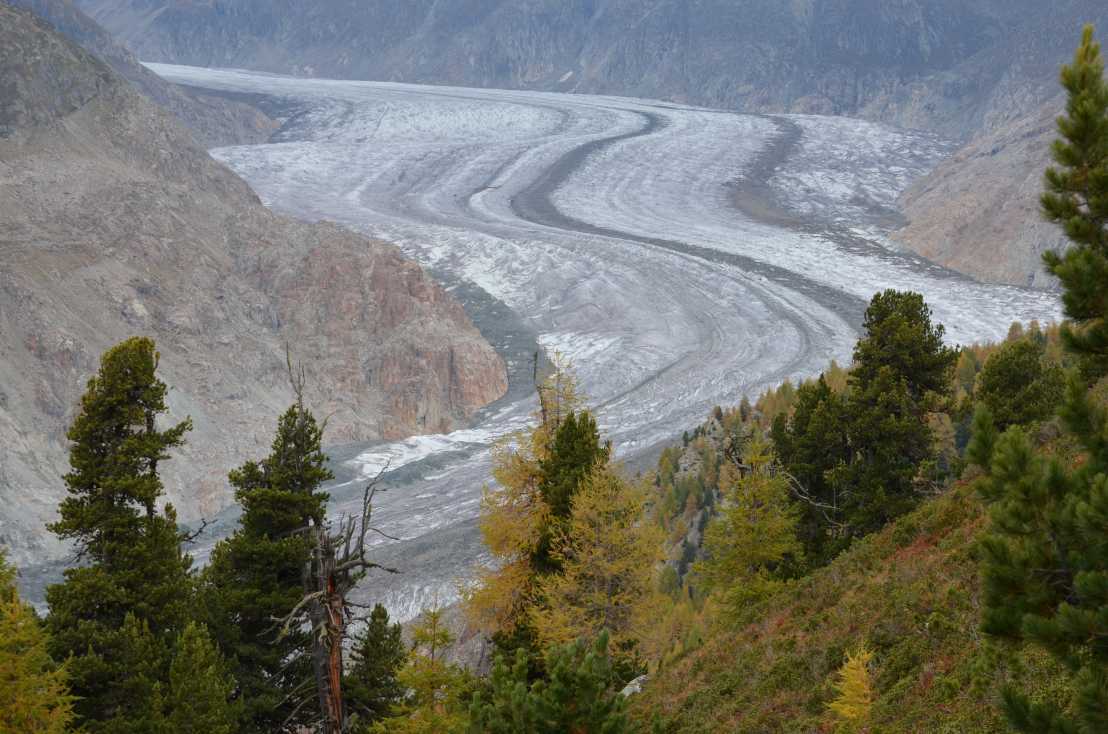
The Swiss stone pine (Pinus cembra) has long been the 'queen' of the upper forest line, where it is a keystone species for this ecosystem. After a substantial loss of area mainly due to anthropogenic activities during the past few centuries, climate change could further displace the species by fast-growing competitors from lower elevation, with restricted habitat available for colonization above the current tree line. As adaptation to rapidly increasing temperature and decreasing precipitation may require a fast response, persistence may be critical for a species with an excessively long generation time. The analysis of more than 3,000 genes from several hundred young and adult trees at high and low elevations throughout Switzerland revealed that juvenile trees at high elevations had the genetic make-up to cope with both the current and future climate. By contrast, young trees at low elevations mostly had gene variants that are likely disadvantageous in the future, warmer and drier climate. Such adaptational lag is particularly problematic for an old-growing species. The slow shift towards beneficial gene variants, confirmed through simulations, may hamper short-term adaptation to changing environments and, hence, lead to local extinctions of the enigmatic stone pines.
Dauphin, B., Rellstab, C., Schmid, M., Zoller, S., Karger, DN., Brodbeck, S., Guillaume, F., Gugerli, F. (2021). Genomic vulnerability to rapid climate warming in a tree species with a long generation time. Global Change Biology in press (early view). doi: external page10.1111/gcb.15469call_made.
Paper: Influence of internal climate variability on future snow trends in the Swiss Alps
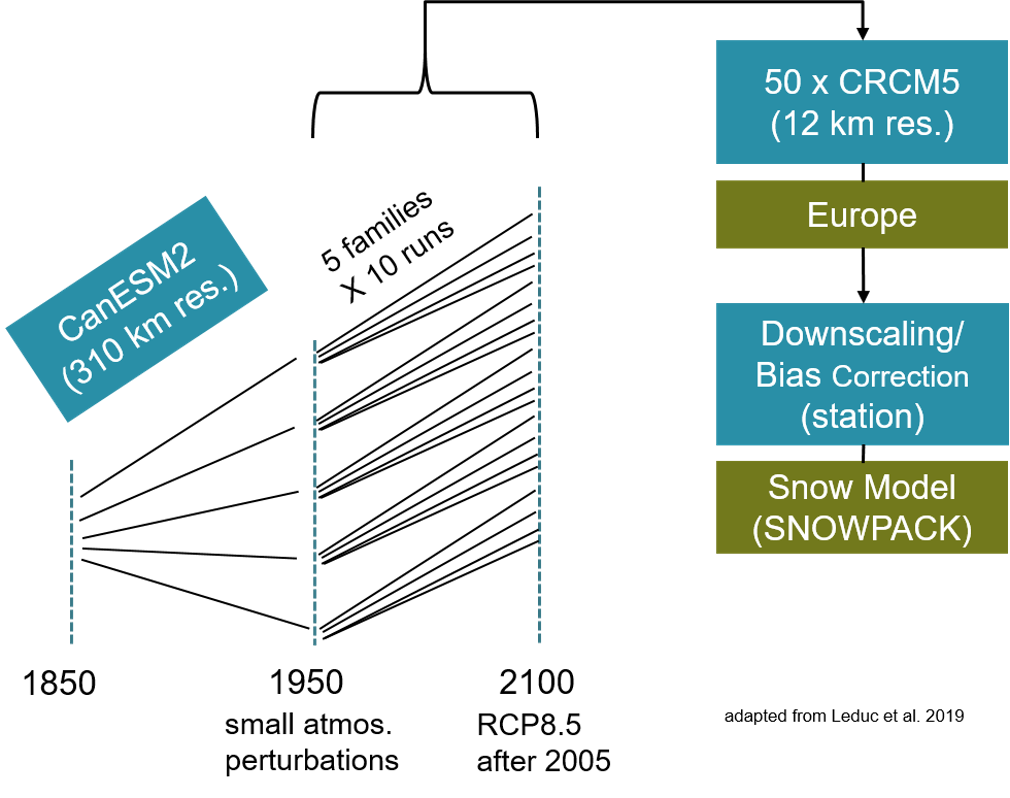
Snow cover is a vital natural resource of the Alpine environment and - in many regions - has already experienced significant reductions in the past. Future climate scenarios such as CH2018 indicate a further decline especially at lower elevations. However, as snow cover is highly variable in both space and time these projections could be subject to considerable uncertainties due to internal climate variability (ICV). A new paper recently published in the journal The Cryosphere investigates the contribution of ICV to uncertainties of future snow cover projections in the Swiss Alps. For this purpose, the authors exploit a 50-member initial condition ensemble of the Canadian Earth System Model (CanESM2) assuming RCP8.5 greenhouse gas concentrations, which is downscaled for a European domain by the Canadian Regional Climate Model (CRCM5) to a resolution of 12 km. The bias-adjusted CRCM5 output is finally used to simulate natural snow conditions for eight sites in the Swiss Alps with the SNOWPACK model. The results reveal a partly substantial contribution of ICV to the overall projection uncertainty of natural snow amounts. Ensemble agreement on significant negative trends of mean and maximum snow depth is obtained considerably later than ensemble agreement for winter mean temperature and snowfall fraction changes. Furthermore the authors find that, relative to the mean, interannual variability of snow cover increases in the future which will exacerbate already existing uncertainties that snow-dependent economies are facing.
Find out more here:
Willibald, F., Kotlarski, S., Grêt-Regamey, A., and Ludwig, R. (2020). Anthropogenic climate change versus internal climate variability: impacts on snow cover in the Swiss Alps, The Cryosphere, 14, 2909–2924, doi: external page10.5194/tc-14-2909-2020call_made
Paper: Constraining Atmospheric Selenium Emissions Using Observations, Global Modeling, and Bayesian Inference
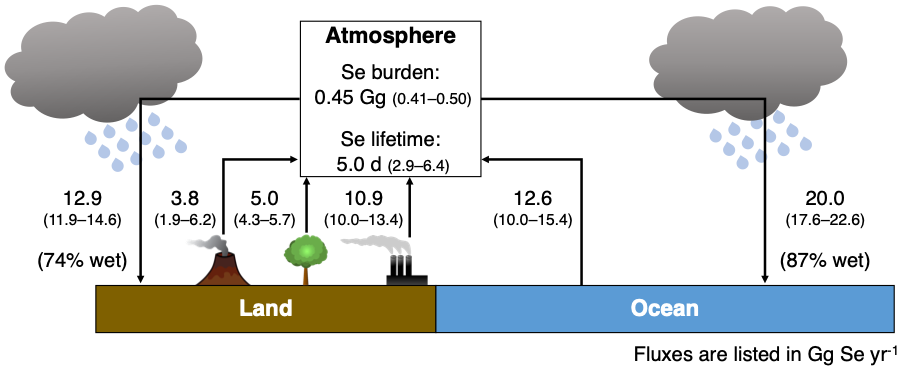
Since selenium (Se) is an essential dietary trace element for humans and livestock, it is important to maintain an adequate supply of Se to agricultural soils. Atmospheric deposition is thought to be one of the major sources of Se to soils, but until now the estimates of atmospheric Se fluxes were highly uncertain. To constrain these uncertainties, we implemented the atmospheric Se cycle in a global aerosol-chemistry-climate model, SOCOL-AER. Applying Bayesian inference techniques, we compared modelled aerosol Se with a compiled database of aerosol Se measurements to produce probabilistic estimates of global emissions from the four major Se sources (anthropogenic activities, volcanoes, marine biosphere, and terrestrial biosphere). We find that between 29 and 36 Gg of Se are emitted to the atmosphere every year, doubling previous estimates of emissions. The global mean Se deposition flux to soils is shown to be 25 times larger than the geological weathering flux to soils, highlighting the importance of the atmospheric Se supply to agricultural soils.
Feinberg, A., Stenke, A., Peter, T., and Winkel, L. H. E. (2020). Constraining Atmospheric Selenium Emissions Using Observations, Global Modeling, and Bayesian Inference, Environmental Science & Technology, 54 (12), 7146-7155, doi: external page10.1021/acs.est.0c01408call_made
Paper: Physiological response of Swiss ecosystems to 2018 drought across plant types and elevation
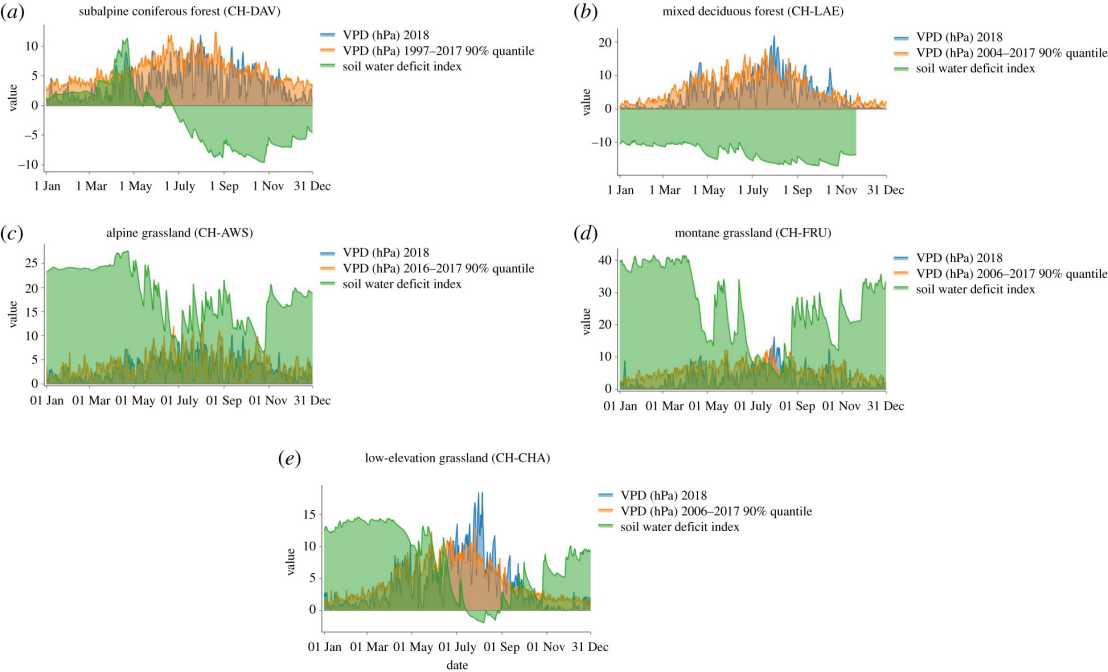
Using five eddy covariance flux sites (two forests and three grasslands), we investigated ecosystem physiological responses to the 2018 drought across elevational gradients in Switzerland. Flux measurements showed that at lower elevation sites (below 1000 m.a.s.l.; grassland and mixed forest) annual ecosystem productivity (GPP) declined by approximately 20% compared to the previous 2 years (2016 and 2017), which led to a reduced annual net ecosystem productivity (NEP). At the high elevation sites, however, GPP increased by approximately 14% and as a result NEP increased in the alpine and montane grasslands, but not in the subalpine coniferous forest. There, increased ecosystem respiration led to a reduced annual NEP, despite increased GPP and lengthening of the growing period. Among all ecosystems, the coniferous forest showed the most pronounced negative stomatal response to atmospheric dryness (i.e. vapour pressure deficit, VPD) that resulted in a decline in surface conductance and an increased water-use efficiency during drought. While increased temperature enhanced the water-use efficiency of both forests, de-coupling of GPP from evapotranspiration at the low-elevation grassland site negatively affected water-use efficiency due to non-stomatal reductions in photosynthesis. Our results show that hot droughts (such as in 2018) lead to different responses across plants types, and thus ecosystems. Particularly grasslands at lower elevations are the most vulnerable ecosystems to negative impacts of future drought in Switzerland.
Gharun, M., Hörtnagl, L., Paul-Limoges, E., Ghiasi, S., Feigenwinter, I., Burri, S., Marquardt, K., Etzold, S., Zweifel, R., Eugster, W., Buchmann, N. (2020). Summer 2018 drought reduced forest and grassland productivity, but not at higher elevations in Switzerland. Philosophical Transactions of the Royal Society B 375: 20190521, doi: external page10.1098/rstb.2019.0521call_made

